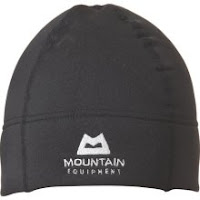So if your looking for an idea of which supplements and foods taste the best whilst still doing the job, here's 5 key nutrition products that I believe fill that criteria:
1. Gels
They taste like hell (except the one that I recommend below) but by God they don't half give that seriously needed boost. Energy gels contain the right blend of carbohydrates and electrolytes required to keep you going during times when digestion of regular food just doesn't happen. I use the High Five Energy Gel: (http://highfive.co.uk/product/energize/energy-gel-2). General recommendations are to take up to 3 sachets per hour , but I tend to opt for around 1 -2 per hour (depending on how long I have been running for, what the terrain ahead is like etc.) as too many of them tends to upset my stomach (the apple flavour is the best I've tasted yet by the way!)
2. Energy and Hydration Drinks
A far more appetising way of refuelling whilst trail running is to use energy drinks that come efficiently packaged as a dissolvable powder, perfect for trail running and mountain marathons where low weight is essential!
My preference at the moment is SIS GO Electrolyte http://www.scienceinsport.com/sis-products/sis-go-range/sis-go-electrolyte/sis-go-electrolyte-40g/, purchased in a bottle, they are suitable for long, single day trail runs, where as sachets are ideal for multi-day races such as The OMM ( http://www.theomm.com/ ), multi-day training sessions, or runs where you don't want to use them until later in the day (you therefore don't have to lug them round in a bottle full of water, just carry them in their sachet and empty into your water bottle when you need them).
The best bit about SIS GO Electrolyte is that it kills two birds with one stone: it provides sustained energy as well as effective hydration, two key factors that play a key role on whether you pace it through the finish line, or fall flat on your arse mid race!
3. Energy Bars
ClifBar produce the most palatable, healthy, and energy rich bar on the market at this moment (in my personal opinion). Natural ingredients such as rolled oats and fibre are used in the these bars thus making them taste more like a flapjack and less like a block of damp, flavoured cardboard! Check them out, they're definitely worth a shot! http://www.clifbar.co.uk/food/products_clif_bar/
4. Dehydrated/Freeze Dried Meals (For Multi-Day Race/Training Session Use)
It's vital that you refuel in your tent after a hard days running if you want any chance at completing the next day, your body needs a large amount of calories to replace the epic amount that you burnt throughout the day. Without them, your body won't effectively recover and you'll feel like you've had the life sucked out of you the next morning. The only way to do this efficiently during multi-day mountain races is to carry freeze dried meals, after constant testing and trial and error I have finally found the mother of all freeze dried meals (in my opinion): http://www.expeditionfoods.com/. These guys are heroes in my mind and have mastered creating super high calorie meals that taste like real food, and most importantly, don't stay crunchy even when you followed the re-hydration instructions on the back to the last letter!
Expedition Foods currently provide regular ration packs (packaged wet food), regular serving freeze dried meals (450 Kcals), and the best of the lot: HIGH CALORIE FREEZE DRIED (850 Kcal)!
My favourite combination is as follows:
- Porridge with Strawberries (Breakfast): http://www.expeditionfoods.com/expedition-foods/freeze-dried/breakfasts/expedition-foods-porridge-with-strawberries.html
- Sweet and Sour Chicken with Rice (Dinner): http://www.expeditionfoods.com/expedition-foods/freeze-dried/high-energy-serving/expedition-foods-sweet-and-sour-chicken-with-rice.html
- Custard with Apple (Desert): http://www.expeditionfoods.com/expedition-foods/freeze-dried/desserts/expedition-foods-custard-with-apple.html
This set up provides you with 2,170 Kcal at a weight of 478 grams, an impressive Kcal - weight ratiol! (Please feel free to comment if you have found any others that contain a better Kcal - weight ratio).
5. REAL FOOD!
When I first began trail running and competing in mountain races and marathons, I took only race specific energy gels, powders and bars, this quickly led to a craving for regular foods such as dried fruit, nuts and other "snacky" bites. I now often carry a little zip-lock bag containing a few snacks, they not only provide some well earned calories, but often give a little bit of a "morale boost":
- Salted Peanuts - Salt tastes amazing when all you've been eating is sweet tasting energy supplements and foods)
- Haribo Sweets - Sweets always cheer you up and as an added bonus provide a bit of sugar!)
- Dried fruit - Mango is my favourite but take what you love the most! (preferably as lightweight as possible)
- Chocolate Raisins - Contain loads of fat, sugar, and make you feel happy when the weather turns crap and your soaking wet and knackered!
So if you're interested in trying out some of these products why not grab a few testers and go out for some exercise!
Alternatively, if you want to test them on the hills and learn the skills required to be a competent trail runner and mountain athlete along the way, visit our website at:
Most of our courses include free samples of gels, powders and freeze dried meals!
We're also on Facebook and Twitter:
See you on the hills!

















